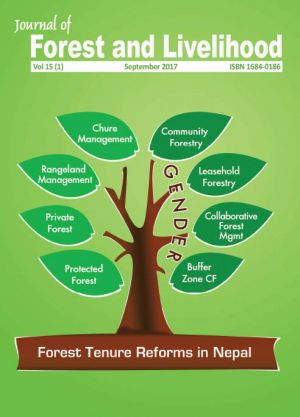Collaborative Forest Management in Nepal: Tenure, Governance and Contestations
DOI:
https://doi.org/10.3126/jfl.v15i1.23084Keywords:
Benefit sharing, collaborative forest management, forest governance, tenure, TeraiAbstract
Collaborative forest management (CFM) is a ‘community-based’ forest tenure regime that works in partnership between the central government, local government and local forest user groups in Nepal’s Terai, particularly in the management of large, contiguous forests. It has been in practice since the early 2000s in the form of ‘pilot initiatives’ and is gradually receiving greater legal attention. Through our own experiences, available literature and review of policies, we document the evolutionary history of Terai forest and CFM’s current issues. We found that the management aspects of Terai forests have been weak throughout its history. We also found a number of issues and challenges in the implementation of CFM. Some of the prominent issues include ambiguity in tenure rights and security, lack of appropriate and uncontested policy provisions for cost and benefit sharing among collaborators, limited decision-making space for forest-managing communities and local governments, and limited capacity of collaborators for the productive management of forests. We suggest tenure reform in terms of legal, institutional, technical and financial arrangements, so as to make CFM an effective forest management model in the Terai.
Downloads
Downloads
Published
How to Cite
Issue
Section
License
CC-BY-NC: This license allows reusers to distribute, remix, adapt, and build upon the material in any medium or format for noncommercial purposes only, and only so long as attribution is given to the creator.





